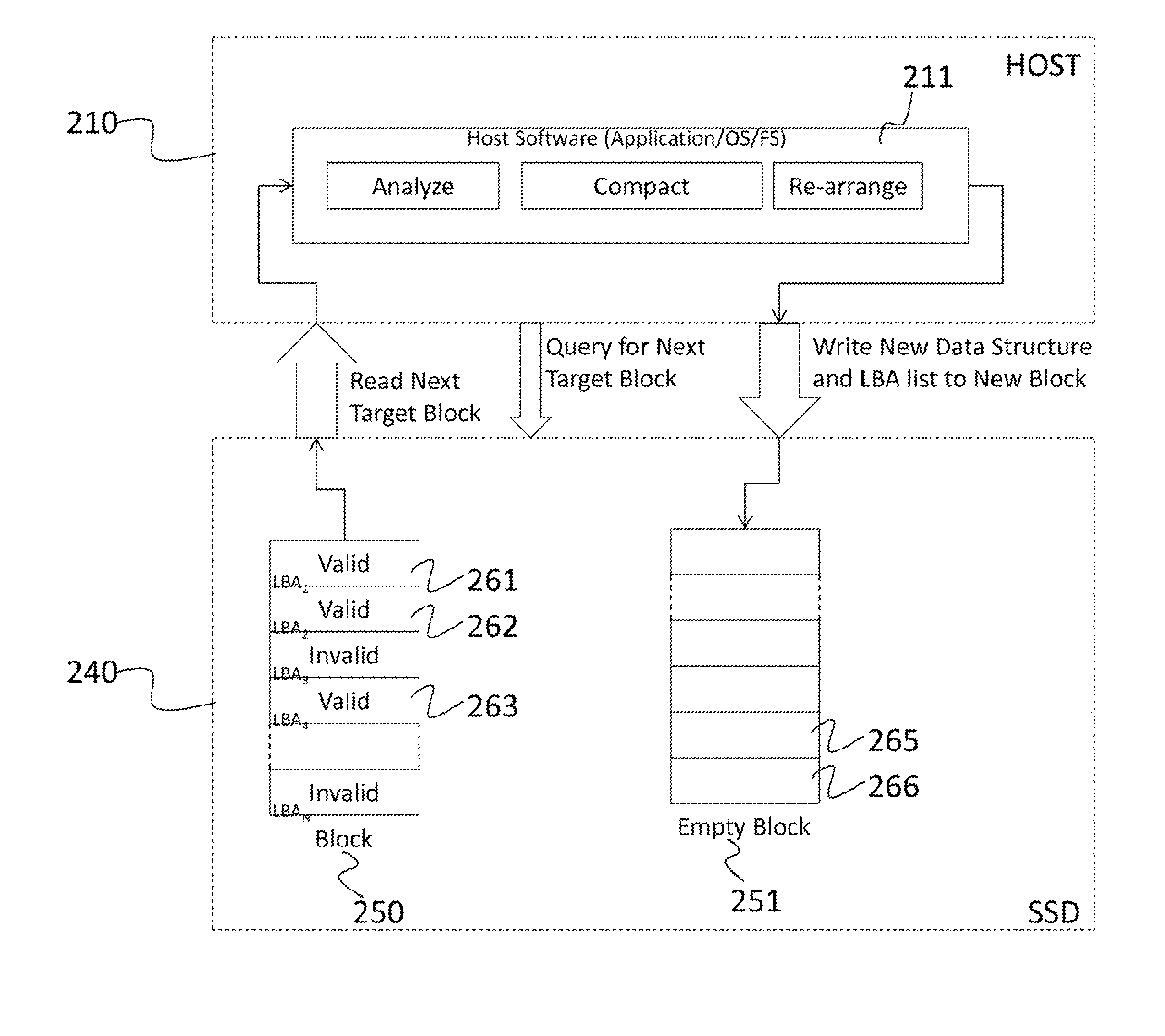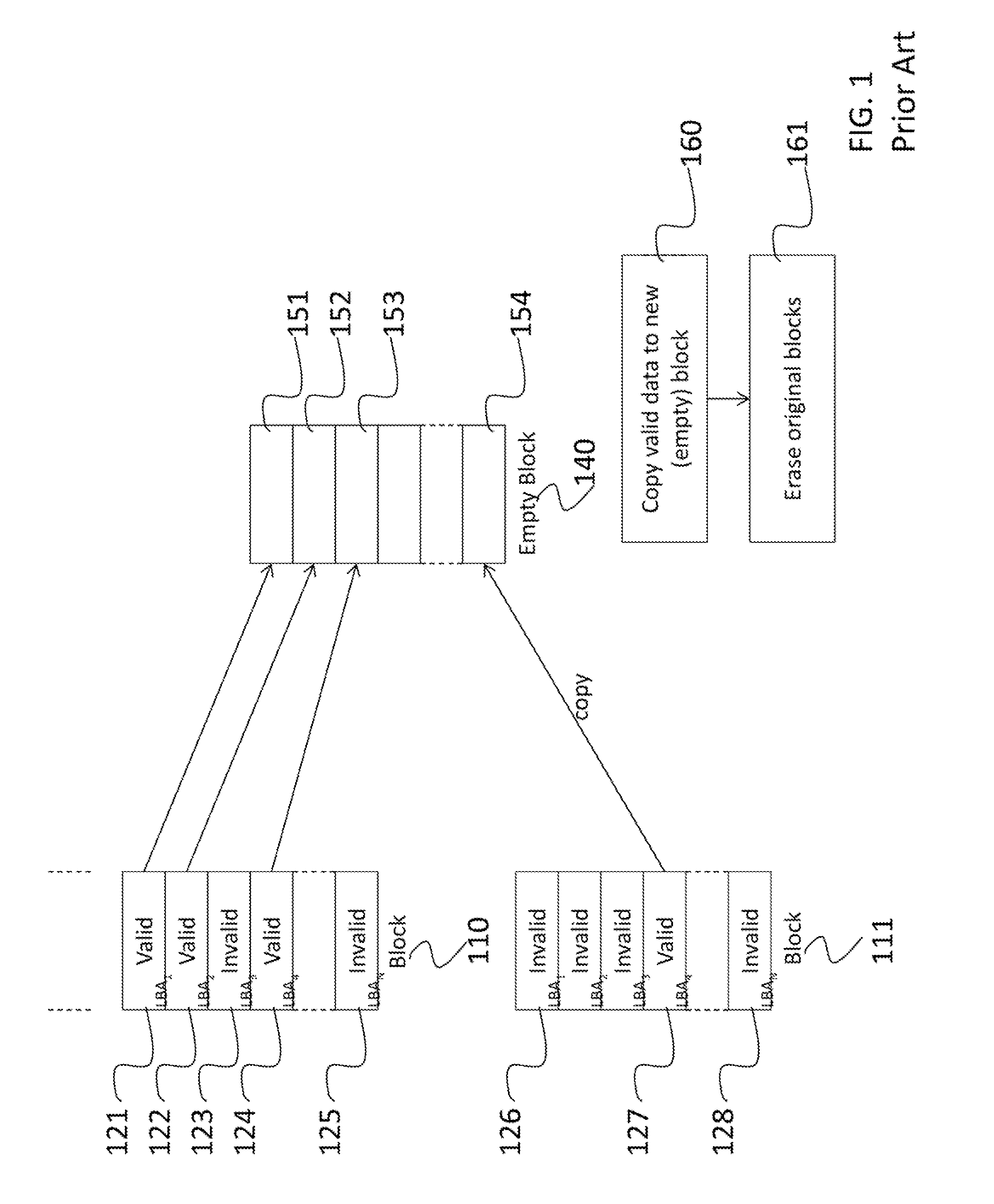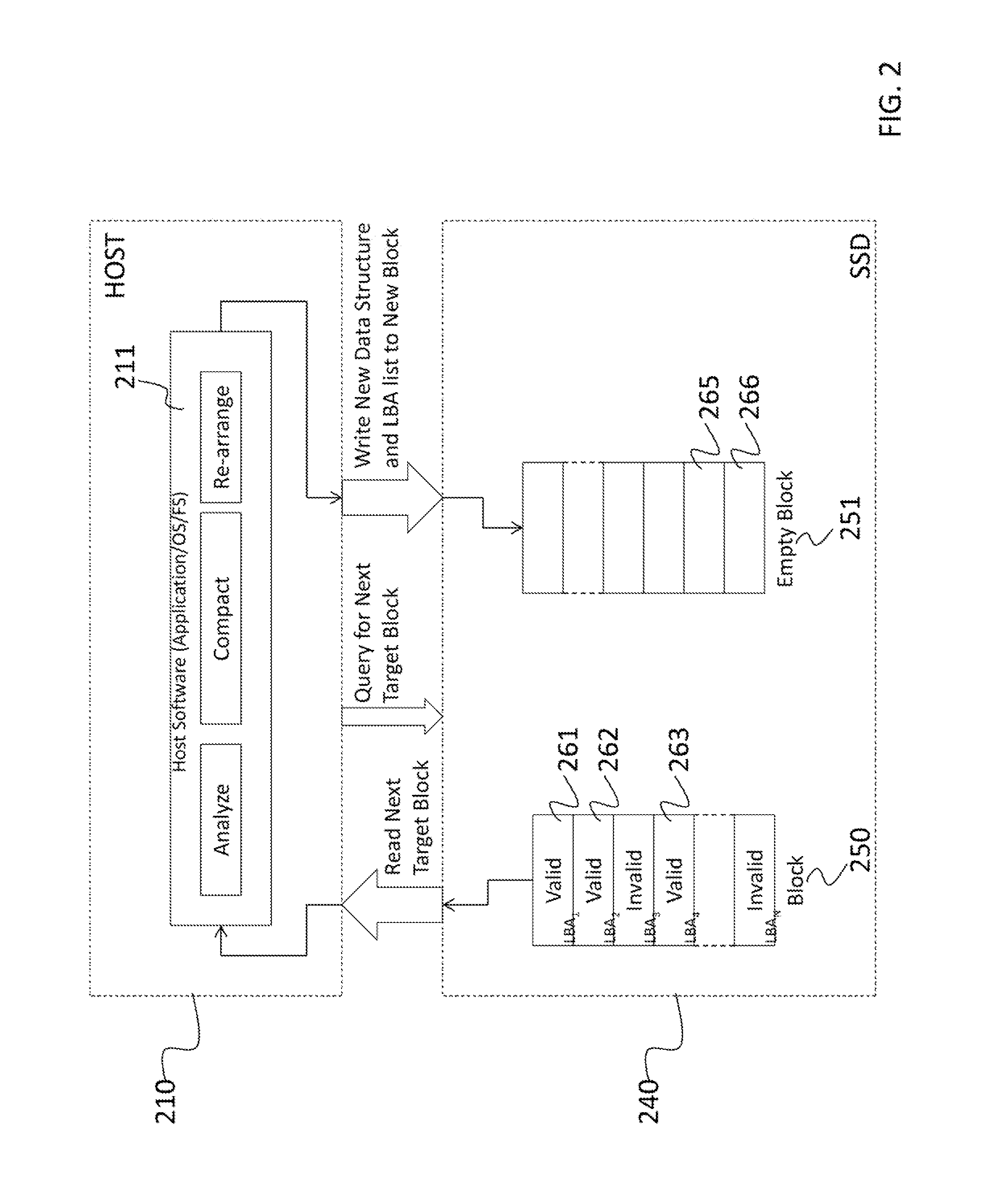Systems, solid-state mass storage devices, and methods for host-assisted garbage collection
a technology of solid-state mass storage and garbage collection, which is applied in the direction of memory address/allocation/relocation, input/output to record carriers, instruments, etc., can solve the problems of only injecting electrons into the floating gate, unidirectional charging (programming) of the floating gate, and not allowing isolation of individual memory cells or even pages, etc., to achieve more efficient data storage
- Summary
- Abstract
- Description
- Claims
- Application Information
AI Technical Summary
Benefits of technology
Problems solved by technology
Method used
Image
Examples
Embodiment Construction
[0025]The present invention generally relates to host computer systems that perform application data compaction operations, solid-state mass storage devices that perform garbage collection operations, and interactions between such host computer systems and mass storage devices. In particular, certain aspects of the invention provide for promoting synergies between application data compaction and garbage collection operations. According to a preferred embodiment of the invention, a host computer system and a solid-state mass storage device interact to assist with data storage on the mass storage device by combining the previously separate tasks of application data compaction and garbage collection operations into a single cooperative operation. Although embodiments of the invention discussed below are described in reference to non-volatile, solid-state NAND flash memory components, it is within the scope of the invention that aspects described herein may be applicable to other memory...
PUM
 Login to View More
Login to View More Abstract
Description
Claims
Application Information
 Login to View More
Login to View More - R&D
- Intellectual Property
- Life Sciences
- Materials
- Tech Scout
- Unparalleled Data Quality
- Higher Quality Content
- 60% Fewer Hallucinations
Browse by: Latest US Patents, China's latest patents, Technical Efficacy Thesaurus, Application Domain, Technology Topic, Popular Technical Reports.
© 2025 PatSnap. All rights reserved.Legal|Privacy policy|Modern Slavery Act Transparency Statement|Sitemap|About US| Contact US: help@patsnap.com



